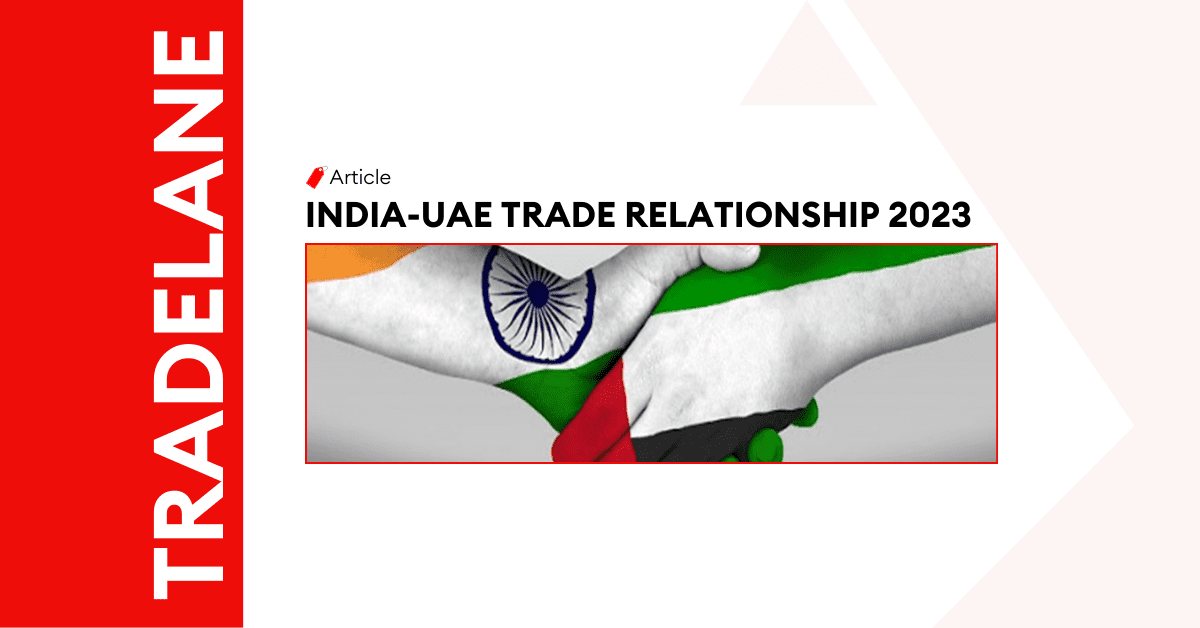
Challenges and Opportunities: India-UAE Trade Relationship in 2023
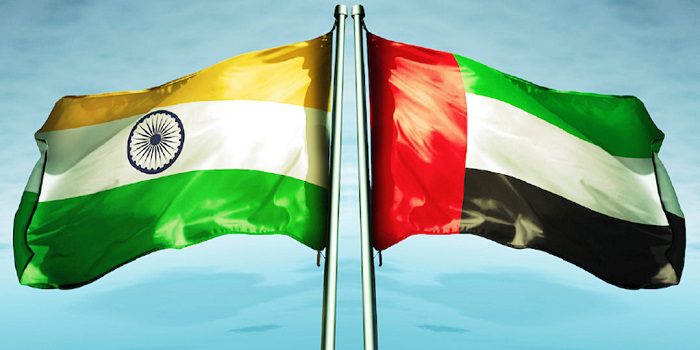
Introduction
The trade relationship between the United Arab Emirates (UAE) and India is a dynamic and evolving partnership that holds immense potential for both nations. Over the years, these two countries have strengthened their ties across various sectors, from political and diplomatic relations to energy cooperation, technology partnerships, and trade and investment. The bilateral trade between India and the UAE has seen remarkable growth, with both countries actively engaged in boosting their economic cooperation. Here, we will delve deeper into the UAE-India trade lane, exploring key areas of collaboration, trade trends, transportation methods, major ports and airports, prohibited products, and the impact of the Comprehensive Economic Partnership Agreement (CEPA). Join us on this journey to uncover the intricacies of one of the most significant trade relationships in the world today.
Overview of Trade Between India and the UAE
Both countries have corporated in multiple areas to strengthen their bilateral trade. Some of them include:
Political and Diplomatic Relations
The UAE and India has established a strategic relationship over the years that has led to high-level arrangements and visits. For instance, the historic visit of the Indian Prime Minister in 2015 to the UAE – an event that started the strategic partnership between both countries, and the visit of Crowned Prince of the UAE to India in 2017.
Furthermore, both countries regulated their diplomatic and political matters through UAE-India Strategic dialogue.
Energy Cooperation
Both the countries are looking for long-term investor relationships. To achieve this, the Indian oil companies are offered 10% participating interest in the Lower Zakum offshore oil field. Whereas, the UAE has participated in strategic regulation of India’s Mangalore oil reserves.
Technology Partnerships
Both nations have also signed multiple agreements in digital innovation and transformation. The biggest example of such partnership includes the collaboration of Indian Space Research Organization (ISRO) and the UAE Space Agency (UAESA).
UAE has also offered residency permits to high-end technology experts, further promoting technological corporation.
Trade and Investment
UAE is the third-largest trade partner of India, and their second-largest export destination. The bilateral trade between the two countries reached the total of USD 72 billion for the fiscal year 2021-22. Furthermore, the UAE has several substantial investments in India, especially in the construction development, air transport, tourism, metallurgical, and power industries.
India-UAE Bilateral Trade Trends
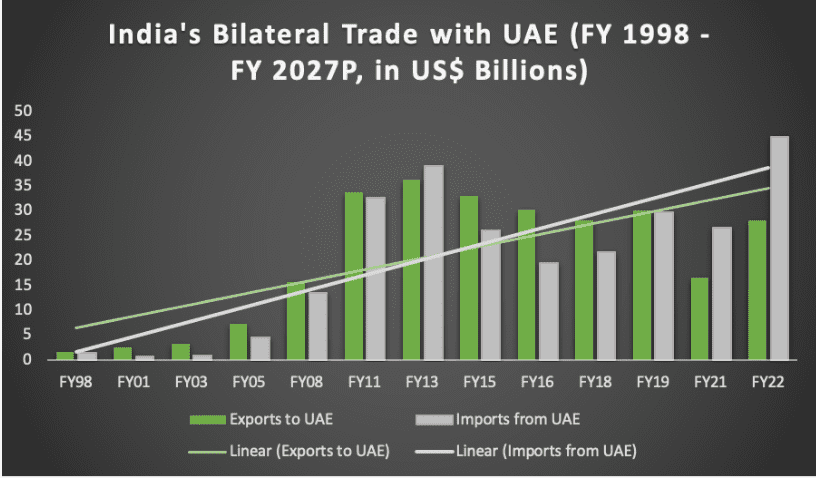
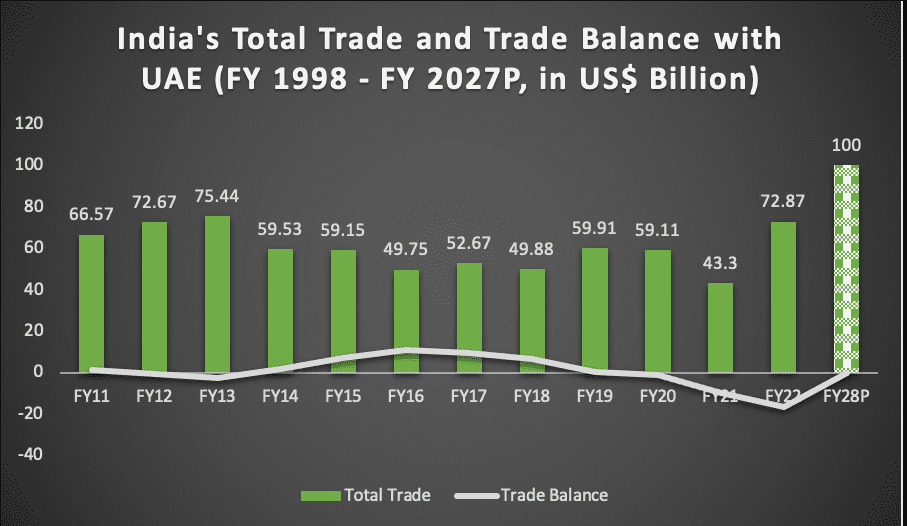
India’s trade with UAE has accelerated since 1950 after the oil boom and improvement in access to storage facilities. The trade further gained momentum after 2004 when the Free Trade Agreement (FTA) was signed between India and the Gulf countries.
As a result of these efforts, the trade volume for both the countries increased from USD 180 million in 1970 to USD 75.44 billion in 2013. In the subsequent years, the trade lane did experience a slight slump in 2018 and Covid19 pandemic period, which caused the total trade revenue to fall to USD 42 billion. However, the trade between the two countries bounced back in FY 2022 by 68.4% year-on-year to reach USD 72.87 billion.
India-UAE Trade Statistics (USD Billion) | ||||
Year | Export from India to UAE | Imports from UAE to India | Total Bilateral Trade | Trade Balance |
1997-1998 | 1.62 | 1.47 | 3.09 | 0.15 |
1998-1999 | 1.86 | 1.72 | 3.58 | 0.14 |
1999-2000 | 2.08 | 2.00 | 4.08 | 0.08 |
2000-2001 | 2.59 | 0.65 | 3.24 | 1.94 |
2001-2002 | 2.49 | 0.91 | 3.4 | 1.58 |
2002-2003 | 3.32 | 0.95 | 4.27 | 2.37 |
2003-2004 | 5.12 | 2.05 | 7.17 | 3.07 |
2004-2005 | 7.34 | 4.64 | 11.98 | 2.7 |
2005-2006 | 8.59 | 4.34 | 12.93 | 4.25 |
2006-2007 | 12.02 | 8.65 | 20.67 | 3.37 |
2007-2008 | 15.63 | 13.48 | 29.11 | 2.15 |
2008-2009 | 24.47 | 23.79 | 48.26 | 0.68 |
2009-2010 | 23.97 | 19.49 | 43.46 | 4.48 |
2010-2011 | 33.82 | 32.75 | 66.57 | 1.07 |
2011-2012 | 35.92 | 36.75 | 72.67 | -0.83 |
2012-2013 | 36.31 | 39.13 | 75.44 | -2.82 |
2013-2014 | 30.52 | 29.01 | 59.53 | 1.51 |
2014-2015 | 33.02 | 26.13 | 59.15 | 6.89 |
2015-2016 | 30.31 | 19.44 | 49.75 | 10.878 |
2016-2017 | 31.17 | 21.50 | 52.67 | 9.67 |
2017-2018 | 28.14 | 21.73 | 49.88 | 6.41 |
2018-2019 | 30.12 | 29.78 | 59.91 | 0.34 |
2019-2020 | 28.85 | 30.25 | 59.11 | -1.40 |
2020-2021 | 16.67 | 26.62 | 43.30 | -9.94 |
2021-2022 | 28.04 | 44.83 | 72.87 | -16.78 |
Trade Basket of UAE-India Bilateral Trade
The trade between the two countries is diverse; but the main products in the trade basket include: petroleum, gems and jewelry, engineering goods, food items, and textiles. Based on the data released from UN Comtrade between 2016-2021, the following were the major items by composition.
UAE’s Top Imports to India (2016-21) | UAE’s Top Exports from India (2016-2021) | ||
Gems and Jewelry (34.4%) | Natural Pearls, Semi-Precious Stones, and Metals | Coal, Oil, and Gas (46.2%) | Mineral Oils, Fuels, and Waxes |
Coal, Oil, and Gas (18%) | Mineral Oils, Fuels, and Waxes | Gems and Jewelry (33%) | Natural Pearls, Semi-Precious Stones, and Metals |
Textile & Apparel (5%) | Knitted Apparel | Industrial (8.4%) | Plastics |
Non-Knitted Apparel | Salt, Sulfur, and Cement | ||
Textile Articles | Mechanical Goods | ||
Industrial (8%) | Mechanical Parts
| Metal and Mining (6.8%) | Copper |
Organic Chemicals | Iron & Steel | ||
Plastics | Aluminum | ||
Food and FMCG (7%) | Cereals | FMCG (2%) | Perfume |
Edible Fruits and Nuts | Animals, Vegetables, and Edible Fat | ||
Fish and Marine Products | Fruit and Nuts | ||
Shipping Routes and Modes of Transportation on UAE-India Trade Lane
Modes of Transportation
Air and ocean freight are commonly used to ship cargo from UAE to India. The choice between the two options depends on the requirement of each business and can be decided by considering these factors:
- Time
- Cost
- Cargo volume
- Cargo size
Here’s a closer look at the two types of method and what cargo type suit them best:
Shipping by Ocean
You can either send ocean freight via Less Than Container Load (LCL) or Full Container Load (FCL). In LCL shipping, you can rent a shared space in a container, which makes it a most cost-efficient way to import from India to the UAE. The other option, FCL, is to get an exclusive container for the goods. The type of cargo that typically shipped by sea include:
- Liquid chemicals
- Construction equipment
- Heavy machinery
- Temperature-controlled food and medicines
Benefits of Utilizing Ocean Freight
The shipment from UAE and India will be completed via a cargo vessel that would likely to be 20-ft or 40-ft long and open from one end. Specialist containers are also available for this trade lane with features like refrigeration and ventilation.
The shippers can either choose LCL or FCL based on their requirements.
Considerations for LCL Freight
LCL is a viable option for following conditions:
- The shipment is less or equal to 14 CBM (which is almost 6 standard pallets).
- The shipment doesn’t require urgent delivery.
- Your shipment doesn’t require a dedicated container size.
- Your goods are better suitable to ship in a shared space.
- You are looking for a cost-effective solution.
However, this option might not be suitable if your cargo is fragile or has a short shelf-life, the deadline for delivery is short, or the consignment is very large or heavy.
Considerations for FCL Freight
FCL is a better option in the following scenarios:
- The freight is needed by a specified date.
- You need your cargo to be sealed from origin to destination.
- The cargo weighs more than 14 CBM (that has half the load capacity of a standard 20-ft container)
- The freight is extremely heavy or extremely fragile and requires a dedicated space.
Shipping by Air
Though this is one of the quickest shipping methods, it can be the most expensive one. The cargo types that are typically used to be shipped by air include,
- Electronics
- Medicines
- Small machinery
- Jewelry
When to Choose Air Freight?
The air freight is the best option to send cargo on the trade lane of UAE-India, if any of the following are your requirements:
- The products have short-shelf life and can benefit from quick transit time.
- The cargo needs to be delivered in the shortest time possible.
- The freight is high-valued and requires a high security level.
- The shipment is small – only a few pallets.
- The consignee and the supplier are closer to an international airport rather than a seaport.
Major Ports for UAE-India Trade
Here are some of the ports that holds great significance for the trade lane between UAE to India:
Major UAE Ports
Jebel Ali
This port is considered to be one of the largest ports in the Middle East. More than 80 shipping services use this port; furthermore, it connects more than 150 ports globally. The port has an annual container volume of more than 19.3 million TEUs.
Zayed Port
This is the main commercial port of Abu Dhabi that can handle ten oceangoing vessels at once in addition to the bulk and general cargo.
Mina Rashid
The port has the largest covered cruise terminal in the world, named Hamdan Bin Mohammad Cruise Terminal. This port mainly handles non-containerized cargo, including RoRo and breakbulk vessels.
Khalifa Port
This deepwater port is mostly used for containers, breakbulk, and general cargo. Furthermore, the port connects more than 70 global destinations in addition to serving over 25 shipping lines. This port has a total annual container volume of more than 14.5 million TEUs.
KhorfakkanOne
This transshipment port provides easy access to the hinterland of the UAE because of its geographic location. This port is known to accommodate over 1000 reefer containers. The port has an annual container volume of greater than 3 million TEUs.
Major India Ports
Kandla Port
This is the largest port of India in terms of cargo volume. This port is specifically known for its activity of importing crude oil. Other than that, it can ship bulk cargo and automobiles.
Mumbai Port
This is the biggest port of India in terms of the size, and is known for the shipping of textile, chemicals, and petroleum products.
Chennai Port
This port has a connection with more than 50 ports globally and has the capacity of handling 60 million tonnes of cargo. The main trades of the port are automobiles, motorcycles, and general industrial cargo. The port has an annual container volume of more than 1.5 million TEUs.
Kolkata Port
This is the oldest port of India with two main docks known as Kolkata Docks and Haldia Docks. The port is mainly used for automobiles, motorcycles, and general industrial cargo.
Kochi Port
This port is the first in India to deal in transshipments and the largest one in Kerala to serve the Arabian Sea. The port has the capacity of handling over 25 million metric tons annually, and can handle a variety of cargo including breakbulk, containers, dry bulk, and liquid bulk.
Major Airports for UAE-India Trade Lane
The following airports hold great significance for the trade between UAE and India:
Major Airports in the UAE
Dubai International Airport
This airport is located just 4km away from Dubai and covers a total area of 2,900 hectares. The airport has facilities to handle advanced cargo, including a specialized center for flowers and plants. The connected airports with Dubai International in India include Chennai, Delhi, Mumbai, Bangalore, Hyderabad, Kolkata, Ahmedabad, and Visakhapatnam.
The cargo-only operators from India to Dubai include UPS Airlines and FedEx Express.
Dubai Al Maktoum
This is a new airport that started operating in 2012 and is located 40km away from Dubai International Airport. The Indian airports that are connected to this one includes:
- Delhi Airport
- Ahmedabad Airport
- Mumbai Airport
- Chennai Airport
Furthermore, the cargo-only operators on this trade lane are Emirates Sky Cargo and Turkish Airlines Cargo.
Abu Dhabi Airport
This is the second busiest cargo hub in the UAE that can handle 1 million tonnes of air freight on an annual basis. Shipping from Delhi can be completed in a day through this route; whereas the shipment from Mumbai can take up to 4 days. The connected Indian airports from Abu Dhabi are Chennai, Delhi, Mumbai, and Ahmedabad airports. Furthermore, only Etihad cargo is offering cargo-only operations on these routes.
Sharjah Airport
The airport is situated 13km southeast of Sharjah and has five cargo terminals. Its modern freight facilities have the capability of handling livestock and temperature-sensitive goods. The shipments coming in from Coimbatore can take 5-7 days, and from Mumbai and Ahmedabad, it takes around 5 days. Lufthansa Cargo are the only cargo-only operators on this route.
Furthermore, the connected Indian airports to Sharjah include:
- Bangalore
- Chennai
- Ahmedabad
- Delhi
- Coimbatore
- Hyderabad
- Mumbai
Major Airports in India
Chennai Airport
The airport is located 21km away from Chennai City Center. This airport serves multiple airports in Dubai, including Dubai International Airport, Abu Dhabi, Dubai Maktoum, and Sharjah. The airport is famous for shipping perishable goods.
The shipment to Dubai is usually completed within 3-8 days. The only cargo operators from Chennai to UAE include:
- Turkish Airlines Cargo
- Emirates Sky Cargo
- Etihad Cargo
Mumbai Airports
This airport is in Western India that processes about 900,000 tonnes of air cargo on annual basis. The suppliers in Nashik, Mumbai, and Pune specifically use this airport for their major shipments. The shipments through this airport can be completed in 3-8 days for Dubai.
The Mumbai airport serves the following airports in Dubai:
- Dubai International
- Sharjah Airport
- Abu Dhabi Airport
- Dubai Maktoum
Furthermore, the cargo-only operators from Mumbai to UAE are:
- Emirates Sky Cargo
- FedEx Express
- Atlas Air
- Turkish Airlines Cargo
- UPS Airlines
Ahmedabad Airport
This airport is situated 9km away from Central Ahmedabad. It serves the city in Northwestern India, including Gujrat. The shipment to Dubai from this airport can be completed within 3-8 days. Furthermore, the UAE airports that Ahmedabad Airport covers include Dubai International, Dubai Maktoum, Sharjah, and Abu Dhabi airport.
The only all-cargo operators for Ahmedabad to UAE include:
- Emirates Sky Cargo
- Global African Aviation
Kolkata Airport
The Kolkata Airport is situated in Dum Dum, West Bengal, which is the biggest air cargo center in Northeastern, India. Direct flights are available to Dubai and Abu Dhabi; whereas the shipment to Dubai can be completed in 3 days. Additionally, Ahmedabad Airport only serves Dubai and Abu Dhabi airports in the UAE, and there are no cargo-only operators for this route.
Other Airports
Some of the other airports that coordinate shipping to the UAE includes:
- Hyderabad
- Cochin
- Coimbatore
- Bangalore
Shipping Times from UAE to India
The time taken to ship freight via ocean or air differs considerably. Air shipment is considered to be the fastest mode that can deliver to Abu Dhabi in the quickest time possible; even in 1 day.
Here is the detail ocean-shipping route duration:
Route | Duration |
Kolkata to Jebel Ali | 23 Days (for FCL & LCL) |
Cochin to Jebel Ali | 18 Days (for FCL & LCL) |
Cochin to Sharjah | 23 Days (for LCL) |
Haldia to Abu Dhabi | 36 Days (FCL) |
Haldia to Jebel Ali | 25 Days (FCL) |
Kattupalli to Abu Dhabi | 31 Days (FCL) |
Kattupalli to Jebel Ali | 19 Days (FCL) |
Kattupalli to Sharjah | 31 Days (FCL) |
Krishnapatnam to Jebel Ali | 17 Days (FCL) |
Chennai to Abu Dhabi | 26 Days (FCL) |
Chennai to Jebel Ali | 17 Days (FCL) & 13 Days (LCL) |
Chennai to Sharjah | 24 Days (FCL) |
Mundra to Abu Dhabi | 33 Days (FCL) |
Mundra to Jebel Ali | 15 Days (FCL) |
Mundra to Sharjah | 27 Days (FCL) |
Nhava Sheva to Abu Dhabi | 23 Days (FCL) & 13 Days (LCL) |
Nhava Sheva to Sharjah | 18 Days (FCL) |
Nhava Sheva to Jebel Ali | 12 Days (FCL) & 10 Days (LCL) |
Pipavav to Jebel Ali | 23 Days (FCL) |
Tuticorin to Jebel Ali | 17 Days (FCL) & 18 Days (LCL) |
Tuticorin to Sharjah | 22 Days (FCL) |
Visakhapatnam to Jebel Ali | 22 Days (FCL) |
Mormugao – Jebel Ali | 21 Days (FCL) |
Here is the detail of air freight shipping times from India to UAE:
Route | Duration |
Ahmedabad, Chennai, Delhi, Kolkata, Bangalore, and Mumbai to Dubai | 6 Days |
Ahmedabad or Mumbai to Sharjah | 5 Days |
Bangalore to Abu Dhabi | 5 Days |
Mumbai to Abu Dhabi | 4 Days |
Coimbatore or Cochin to Dubai | 5 Days |
Coimbatore to Sharjah | 7 Days |
Cochin to Sharjah | 3 Days |
Delhi to Abu Dhabi | 1 Day |
Hyderabad to Dubai | 3 Days |
Banned Products for the Trade Lane UAE-India
Prohibited Products to Export to India
The number of products is banned to export to India due to environmental, safety, and security concerns. It includes items such as drugs, hazardous materials, weapons, certain food items, and products with religious significance. Furthermore, the animals and endangered species are banned from being exported to India.
All the exported goods to India should adhere to the customs regulations of the country and should undergo extensive testing and certification before they are shipped.
Prohibited Items to Import from India
The following items are prohibited to import into UAE:
- Narcotic drugs (all kinds)
- Gambling machines and tools of all kinds
- Live swine
- Items contradicting with public morales and Islamic faith
- Nylon fishing nets
- E-cigarettes and electronic hukkah
- Paan and betel leaves
- Radiation and nuclear fallout dangerous substances
- Reconditioned, inland, or re-used tires
All the goods that are mentioned as prohibited in the Common Customs Law or any other regulations applicable in the UAE.
Essential Documents Required to Ship to India
The following documents are essential to keep in mind when shipping to India:
Commercial Invoice: It is a legal document signed between a seller and buyer, which acts as proof of sale, provided to customs clearance.
Origin Certificate: This document carries information about the origin of the product, including the destination port of the item. It can be submitted physically or through an online platform.
Bill of Lading or Airway Bill: It is used as a shipping receipt and contains the outline indicating terms and conditions of shipping cargo. The signs of all the signatories must be on the BOL.
Credit Letter: It is a letter from the bank that assures that the buyer will honor the sale.
Packing List: This document contains all the details of the products that are being shipped; for instance, their quantity, weight, and dimensions.
Rules and Regulations to Send Cargo to India
For Air Freight
There are several rules and regulations that needs to be followed while sending air freight to India. Along with the proper documentation, compliance to customs rules, and labelling, here are the list of other regulations that you need to abide by:
- The shipments should be addressed to a consignee in India.
- The shipper should have a current account in one of India’s banks.
- The cargo should be sent via an authorized shipping company.
- The shipper must have an AirwayBill for each shipment.
- Each shipment should have a Packing List.
- The shipment must be insured for its value.
- Each shipment should have a Certificate of Origin and Commercial Invoice.
- The duties and taxes must be paid in advance.
- The shipments must be carried through an authorized port of entry.
For Ocean Freight
To import goods to India via ocean freight, the importers should get a license from Indian Government and submit an import declaration to the customs. In addition, the shipper will require to obtain a Certificate of Origin from the exporting country along with submitting an invoice for the products.
The trade opportunities among the two countries are further strengthened by the Comprehensive Economic Partnership Agreement (CEPA). Here are the details of the agreement to help you identify the potential opportunities and challenges if you are interested in investing in the trade lane.
UAE-India CEPA Overview

To further enhance the trade relationship, the Comprehensive Economic Partnership Agreement (CEPA) took place between the countries, which was effective from May 1st, 2022. The main aim of the agreement is to promote economic corporation and trade relations between the two countries with a goal to achieve the target of USD 100 billion by the year 2030.
Objectives of the Deal
Following are the main objectives of the CEPA:
Enhanced Market Access
The CEPA deal seeks to offer significant benefits to the businesses in India and the UAE, which includes reduced tariffs and better market access. This will help in increasing the trade of goods and services between both countries.
Digital Trade Cooperation
Furthermore, the agreement includes the digital trade element, which is the first of its kind for both nations. This aspect will cover areas such as paperless trade, digital payments, intellectual property rights, online customer protection, and foster collaboration for challenges faced by the small and medium enterprises.
Strengthening the Economic Cooperation
This deal between the two nations is predicted to create new jobs, raise the living standards, and offer wider social and economic opportunities for people in both countries. This agreement will also be beneficial for the interests of Israel, United States, along with India and the UAE by opening new routes for regional connectivity and trade.
Who Will Benefit the Most?
Goods | Services Sector | |
UAE Goods
| Indian Goods
| The agreement improves market access to the following services:
|
Economic Benefits for Consumers
The CEPA comes bearing plethora of benefits for the consumers in both India and the UAE. Notably, consumers will have access to a range of competitively priced goods, and more including
- Lower prices
- Quality products
- Product variety
Economic Benefits for SMBs
International trade plays a vital role in helping small businesses to expand in the world economy. The CEPA offers a great opportunity for small businesses in the UAE to get access to the Indian market and diversify their customer base in the following ways:
- Ensuring access to the latest information on requirements and rules of the export.
- Establishing customs procedures that are simple.
- Get access to opportunities that will help in networking with the commercial partners in India.
Challenges in the Trade Deal
The major challenges for the trade between UAE and India might include:
Capacity of Indian Business
Despite being the USD 2.5 trillion economy, the Indian businesses are relatively conglomerate in comparison to global industry. Furthermore, the available experience, capacity, and infrastructure might not be sufficient for the substantial investment and could hinder the full benefits of this trade deal.
Bureaucratic Challenges
Issues such as lack of planning, bureaucratic bottlenecks, and incomplete information are expected to continuously pose hurdles for foreign investment, despite the efforts of government to improve the ease of doing business.
Legal Issues
The legal problems have been a one of the common concerns for unsuccessful foreign investments in India, which can cause troubles for the potential investors. While the laws and regulations are an integral part of trade deals, the procedures must be streamlined to avoid any issues.
Slow Implementation of Investments
UAE announced an investment fund of USD 75 billion in 2015 in India, which faced setbacks due to delay in finalizing government structure and modalities. This scenario could cause a hamper in recognizing the investment commitments in future too.
Energy Pricing Disagreements
The UAE, being an OPEC country, has different perspective in comparison to India when it comes to energy pricing. India’s call for cap on prices has led to several heated exchanges among the oil ministers in the past.
Insufficiency of Clarity and Transparency
Indian companies often face challenges in operating in the UAE due to lack of transparency in the commercial laws and commercial regulations. Furthermore, the lack of clarity from the Emirati point of view increases the problems for Indian businesses.
Air Services Agreement
The air service agreement is yet to be negotiated between the two nations. The UAE wants to increase the number of flights; whereas India wants to maintain a cap in order to protect the domestic airlines. This remains one of the biggest disagreements between the two countries.
Issue Related to the Indian Diaspora
The Indian migrant faces strict regulations in the UAE, especially when working for the local employer. Problems like preferential treatments towards other nationalities have been one of the concerns for the Indian citizens.
Conclusion
The import and export business from UAE to India is expected to grow in 2023 due to India’s strong economic growth and the increasing demand for their products. Currently, UAE is exporting oil, gas, coal, and other minerals to India, as well as, electrical and electronic, machinery and pharmaceutical products.
The trade to India has several benefits including the size of its market and the country being a major exporter of the agricultural products. The government of India is also working to improve the competitiveness of the country’s export. There were several reforms in the last few years that have made it easier for businesses to export products. In the last 5 years the exports have grown by 9.4% per year.
United Arab Emirates (UAE) and India has strong trade relationship. UAE is one of the leading trading partners. The bilateral trade between the two countries stood at USD 72.87 billion in FY 2022 and is expected to reach USD 100 billion by the year 2030 due to Comprehensive Economic Partnership Agreement (CEPA).
Related Articles
Exploring the Booming UAE-Indonesia Economic Relations
The economic relations between the United Arab Emirates (UAE) and Indonesia have been flourishing in
Comprehensive Guide on USA-UAE Economic Relationship
Introduction The United Arab Emirates (UAE) has been a central player in the realm of international
The UAE and Saudi Arabia – Economic Powerhouses on the Rise
The bilateral trade relationship between the United Arab Emirates (UAE) and Saudi Arabia is characte




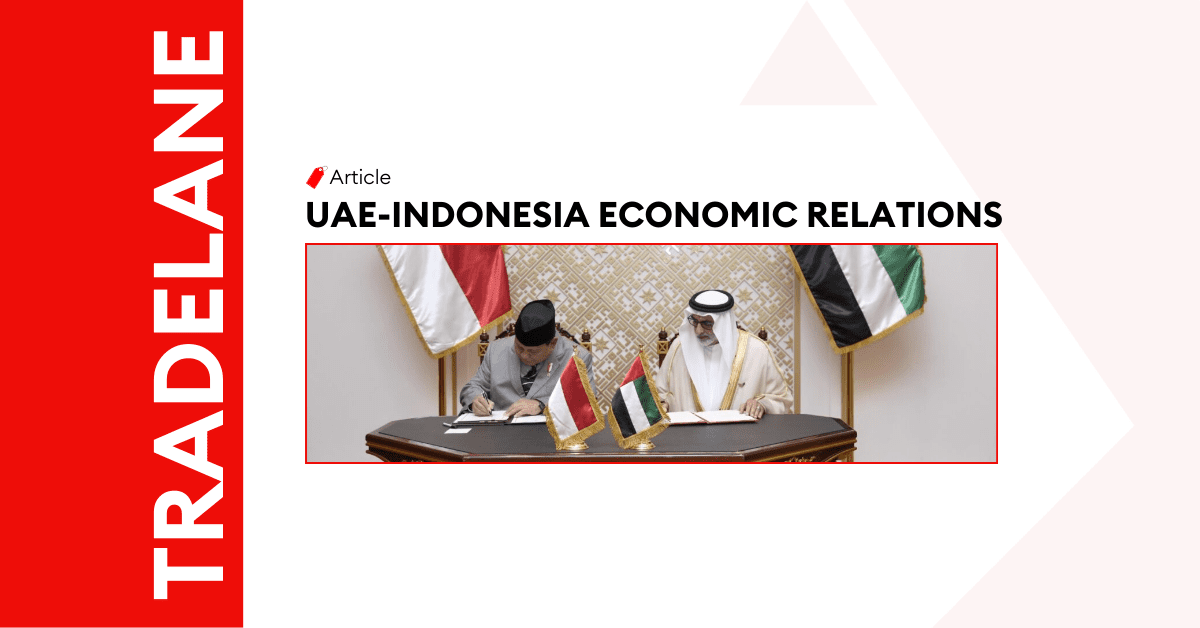
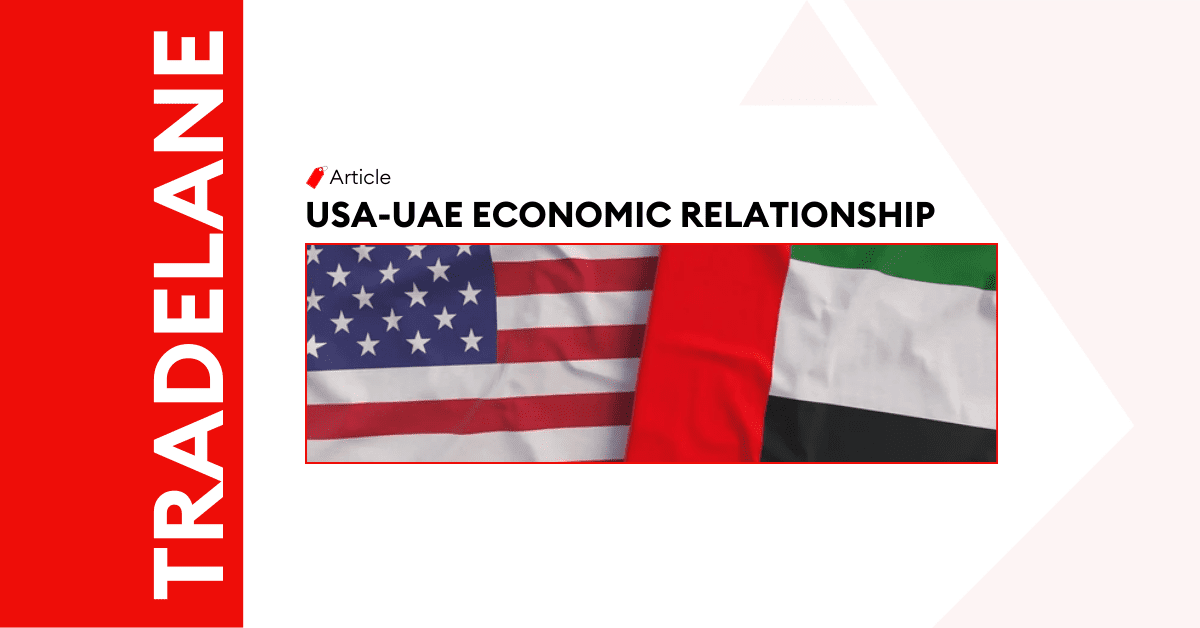
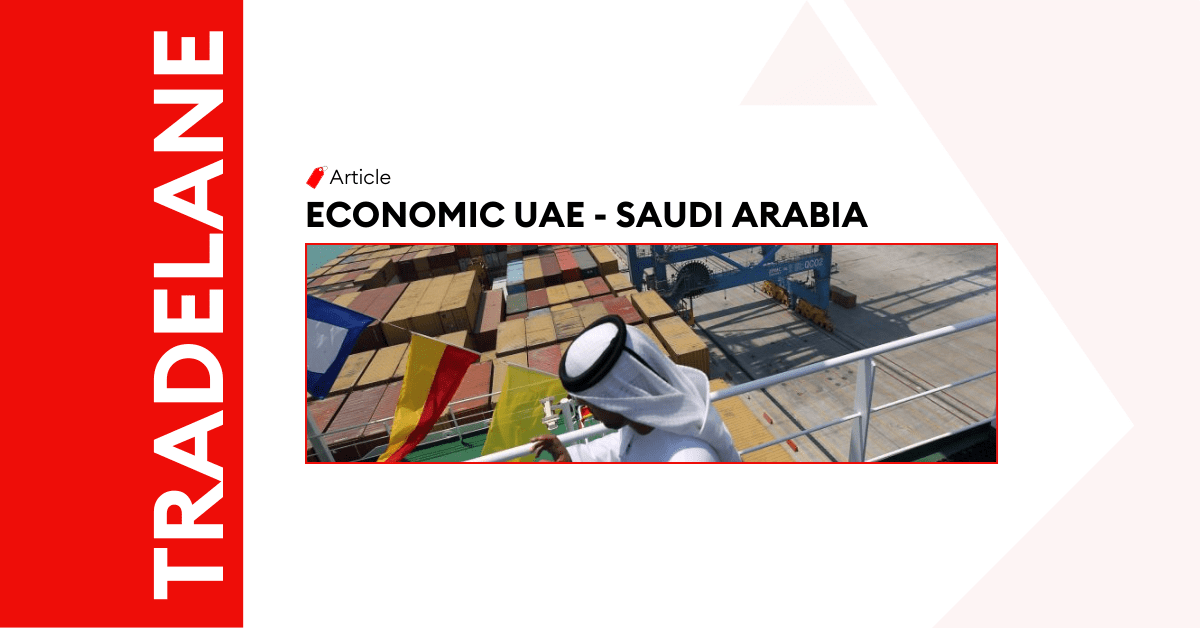
Post a comment
You must be logged in to post a comment.